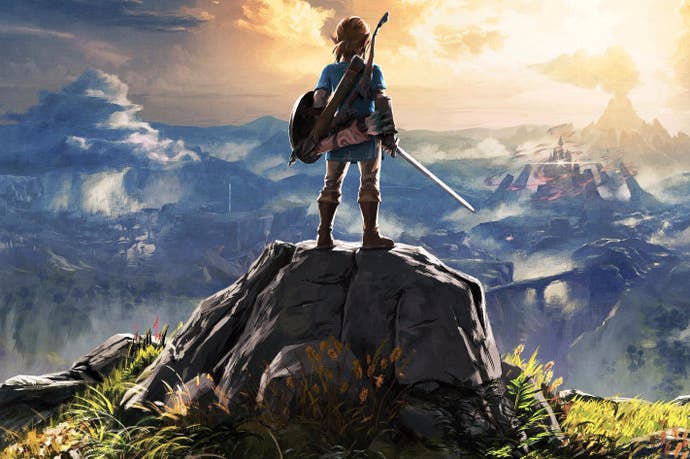Is Zelda on Switch worth the upgrade from Wii U?
UPDATED: Switch wins out in GPU-focused stress tests.
UPDATE 8/3/17 10:30am: As promised, we've spent a couple more days getting to grips with the performance profile of The Legend of Zelda: Breath of the Wild on both Switch and Wii U, and while it's still difficult to justify investing so much money in a new console just for one title, what's clear is that aspects of the game that truly stress the GPU can see significant performance advantages for the Switch title - whether you're docked or using the console as a portable.
We identified several points in the game where the graphics hardware is likely to be put under stress - big explosions while Link indulges in combat, along with the area of the title we had the most requests for testing: Kakariko Village. The former sees the Wii U hardware buckle considerably under the load, while the Switch only sees minor disturbances to its frame-rate - it's not really a big issue for gameplay, as the performance drop is fleeting.
However, what's interesting to note is that handheld performance is actually slightly lower compared to the docked experience in these flashpoints. This is actually a reversal of the situation found during open world traversal, where a docked Switch has a clearly stutters in a much more pronounced way in certain areas - presumably when new terrain data is being streamed in.
But it's the Kakariko Village stress test that really separates Switch and Wii U - here, Nintendo's last-gen platform can lock to 20fps, while the docked Switch stays much closer to its target 30fps frame-rate with less impactful deviations. This is something you'll encounter in both Switch configurations and is by the the biggest dividing point between the two versions from a performance perspective. Combat in villages is minimal to non-existent by all accounts, so the drop in frame-rate here shouldn't be too impactful on gameplay.
Ultimately, getting a complete lock on Zelda performance is challenging - the world is vast and the conditions are ever-changing. Drops to 20fps can be offputting, but in our experience very rarely get in the way of actual gameplay. But what's clear is that there are three performance tiers here - Wii U still plays well, but it is at the bottom of the pile. The docked Switch configuration follows, but playing untethered still offers the smoothest ride overall.
Original story: The Legend of Zelda: Breath of the Wild is a cross-generational title for Nintendo, released simultaneously on both the discontinued Wii U and the new Switch. Lauded as one of the greatest games of all-time, it's a must play, but the question is this: is it worth upgrading from the Wii U to enjoy a better Zelda experience on Switch? Or can you hold fire on a Switch purchase, safe in the knowledge that the Wii U version offers a comparable experience?
It's worth stressing that these are early results, expedited in order to offer an initial, general overview of the differences between both versions, each updated with the 1.1 day one patch. Going in, we didn't expect to see too much in the way of visual differences. Everything we've seen so far of the Switch hardware suggests that it's capable of handing in experiences very much of the Wii U generation, and on top of that, Nintendo has explicitly stated what we should expect to see in terms of differences between the two platforms.
Here's the full low-down from the platform holder:
- Both have a frame-rate of 30fps.
- Both versions of the game offer the same content.
- On a TV, the Nintendo Switch version of the game renders in 900p while the Wii U version renders in 720p.
- The Nintendo Switch version has higher-quality environmental sounds. As a result, the sound of steps, water, grass, etc. are more realistic and enhance the game's Open-Air feel.
- The physical copy of the Wii U version will require 3GB of available memory on the Wii U system or an external drive.
- Some icons, such as onscreen buttons, differ between the two versions.
- A Special Edition and Master Edition of the Wii U version are not available.
Previously, series producer Eiji Aonuma had stated that the Switch edition would offer the "same experience" as the Wii U version, something we were eager to put to the test, especially in the wake of the lacklustre performance we saw at E3 last year.
We've already confirmed the resolution differential between Wii U and Switch, and it's also fair to say that in almost every other respect, the visual make-up of both games is identical. Draw distances, shadow resolution, model quality, texturing, effects, and even the thick, volumetric lighting seen in the first shrine are all exactly the same. In a core visual sense, Wii U owners really aren't missing out at all. Besides resolution, each version turns in nigh-on identical graphics settings.
There is one small difference worth mentioning, and that's texture filtering. On Switch, you get a very slight improvement in bilinear filtering quality, meaning textures aren't filtered so close to your screen. If you look close, you can spot lines passing across mapping on the floor - especially complex brickwork. Now again, Wii U and Switch use obvious cascades, making it easy to see the point any filtering kicks in as you walk forward. But Switch does get an extra 'band' of clarity in the texture-work, before a similar drop-off in quality. Wii U is basically in line with Switch's portable mode in this sense, but to be frank, you won't notice any real difference in motion.
Nintendo's promise of higher audio quality on Switch turns out to have only the most minimal of impact. Whether that's running water, footsteps or swaying grass, the idea is that Switch can tap into its 2x boost to system memory in order to support a richer soundscape. But overall, having spent the day comparing both with closed-cup headphones on, it proved difficult to hear any difference at all. For those using audiophile grade monitors, or high-end surround set-ups, perhaps the Switch's higher quality could shine through. But for most players, the Wii U version's sound isn't falling short in any radical way.
On balance, based on video and audio quality, the Switch version is the one to buy. But it's the narrowest of victories, with resolution the key differentiating factor. The improvements are surprisingly minor given the gulf in potential system power comparing the Wii U to a docked Switch, but there's a very compelling argument for Nintendo to make the game as close as possible on both systems - Wii U owners shouldn't be disadvantaged, while the title itself obviously has the quality to make Switch's debut shine.
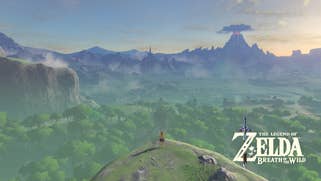

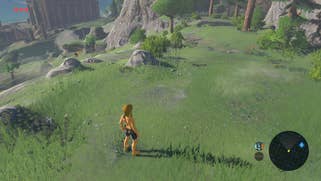

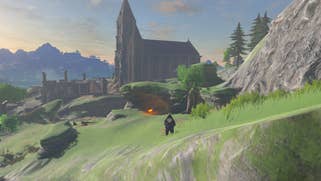
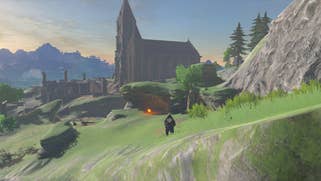




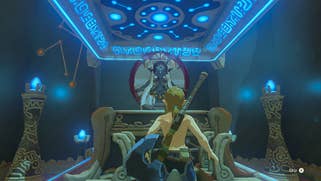
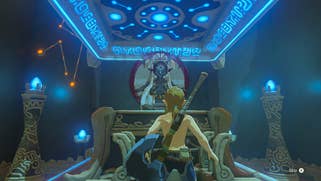
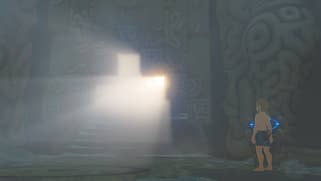
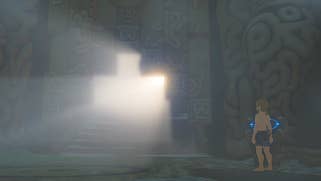
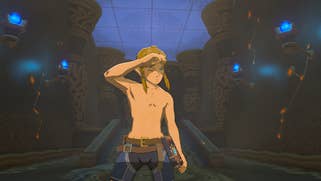
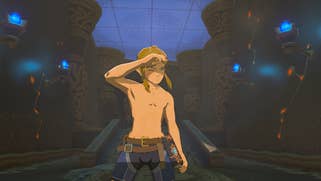
However, while visual features are effectively a match, we should expect better performance on more modern hardware. Of course, Breath of the Wild has been in development for well over four years and its systems-based open-world engine was first built for Wii U hardware. A conversion to Switch happened much later - a different architecture entirely, which may have posed development challenges.
We're going to be comparing the docked Switch experience to Wii U here, but before we do that, let's be clear - as we revealed yesterday, the handheld 720p Switch implementation offers up a smoother experience than the same code running in docked mode. For those looking for the smoothest possible experience, that's the way to go.
However, stacking up Switch as a home console in docked configuration up against the Wii U offers up fascinating performance metrics. The basics first: Breath of the Wild targets a v-synced 30fps on Wii U and Switch, but that huge open world design creates problems sustaining it. Because this is a double-buffered form of v-sync, when it can't sustain 30fps on either console, it drops to the next major factor down, hard-locking to 20fps.
Remarkably, based on Great Plateau tests at least, Switch drops with the same severity as Wii U - but in other sections of the area. There are no obvious causes for this divide either: the rendering load is mild compared to the game's more built-up woodlands, suggesting a bottleneck behind the scenes in the background streaming of data. One theory here is the world is partitioned differently for each machine's RAM setup, creating lurches to 20fps in different spots for each device.
In other words, they can each lock to 20fps - but Switch consistently does it in one spot, while Wii U's problems are in other areas. CPU limitations are the obvious culprit here (with SoC bandwidth contention perhaps explaining why the undocked Switch mode runs more smoothly) but what's clear is that further testing will be required to figure out whether GPU stress points show any further differentiation between the two consoles - Kakariko Village will be our first port of call, along with a more stringent tests of alpha effects.
However, in the here and now at least, based on these first tests, there is indeed a general parity in the experience between the docked Switch and the Wii U experiences - and it is a shame that in both cases, Zelda cannot run at a locked 30fps. Each version drops frames in similar circumstances but in different places.
It'll be fascinating to see if differences do turn up as we progress further into the game, but these initial tests confirm that Wii U only loses out to Switch in terms of the raw pixel count - visual differences are at a minimum, and the game's visual make-up is virtually identical regardless of the system you choose to play it on. Performance requires further testing, but again, there's little to choose between Wii U and a docked Switch based on what we've played thus far.
Switch's ability to decouple from your HDTV, to play wherever you want, is by far and away the most tangible difference between the two versions. The impact of this is far more profound than the smoother performance the handheld version offers up, based on our tests to date. Playing this title anywhere at any time is an irresistible prospect, allowing users to more tightly integrate gaming sessions into busy lifestyles. In conclusion, it's not so much the technical differences between each version of Zelda that should inform a potential Switch upgrade - it's more about whether you buy into the whole concept of the machine, and whether you're excited by the titles available.
